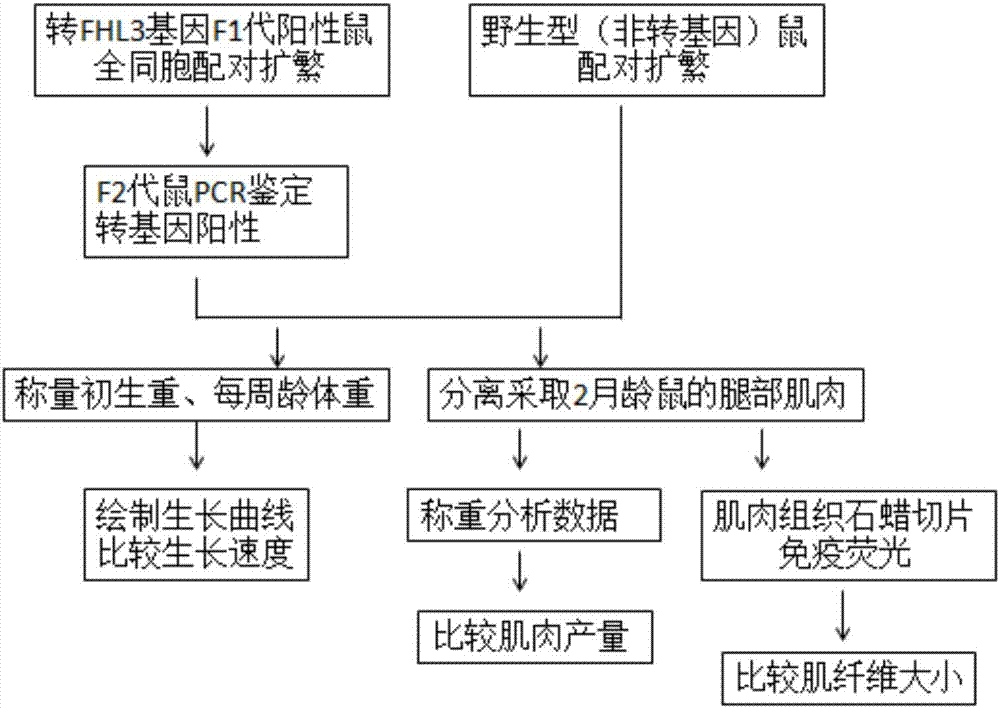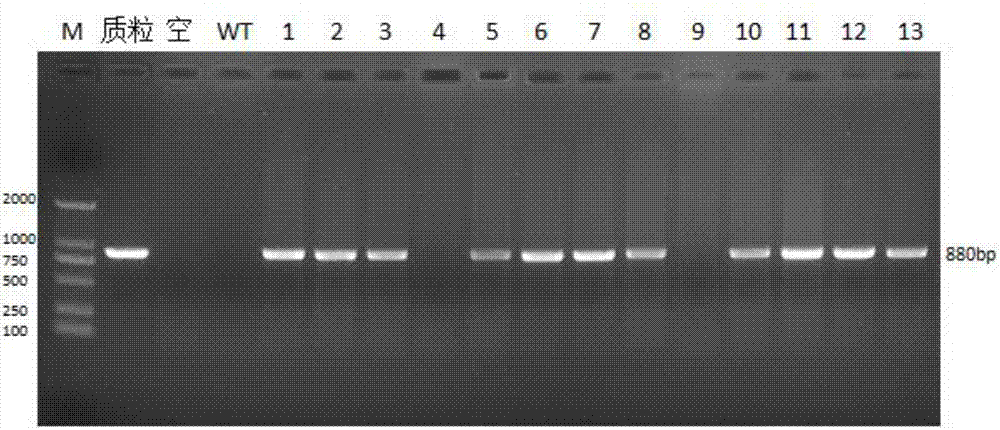Application of FHL3 gene in promotion of animal growth
A technology of animal growth and FHL3, applied in the fields of application, genetic engineering, plant gene improvement, etc., can solve the problems that have not been seen to improve the growth rate and muscle mass of animals by transfecting FHL3 gene, and achieve the effect of high muscle yield and fast growth rate
- Summary
- Abstract
- Description
- Claims
- Application Information
AI Technical Summary
Problems solved by technology
Method used
Image
Examples
Embodiment 1
[0038] Preparation of transgenic mice overexpressing the FHL3 gene:
[0039] 1.1pEGFP-N1L-MCK-FHL3 transgenic vector construction and linearization:
[0040] Total RNA was extracted from the mouse C2C12 myoblast cell line, and cDNA was obtained after reverse transcription. Using the CDS sequence (Genebank accession number: NM-010213.3) of the mouse FHL3 gene published in the NCBI database, design primers containing two restriction sites of Sal I and Not I:
[0041] FHL3-F1 GTCGACGCCACCATGAGCGAGGCATTTGAC
[0042] FHL3-R1-GCGGCCGCTCAGGGGCCTGCTTGGCTG
[0043] The CDS sequence of the FHL3 gene was obtained by ordinary PCR amplification, with a size of 890bp. The specific CDS sequence is:
[0044] GTCGACGCCACCATGAGCGAGGCATTTGACTGTGCAAAATGCAACGAGTCCTTGTACGGCCGCAAATACATCCAGACAGACAGTGGCCCCTACTGCGTTCCGTGCTATGACAACACCTTCGCCAACACCTGTGCTGAGTGCCAGCAGCTCATTGGGCATGATTCAAGGGAACTGTTCTATGAGGACCGCCACTTCCACGAGGGCTGCTTCCGCTGCTGCCGATGCCAGCGCTCCCTTGCCGATGAGCCCTTCACCTGTCAGGACAGTGAGCTTCTGTGTAATGAGT...
Embodiment 2
[0056] Application of FHL3 gene in promoting animal growth:
[0057] 1) The growth rate of the transgenic mice overexpressing the FHL3 gene was significantly faster than that of the wild type
[0058] After the FHL3 gene-transferred F1 generation mice are paired, the pregnancy status of the mice is regularly observed. When the mother mouse is about to give birth, the frequency of inspection is increased. Heavy and well marked. At the same time, the supply of rat food and drinking water is sufficient, and the litter is replaced regularly to ensure a good living environment for the mice. Thereafter, the body weight of each mouse was weighed every week until the 8th week, and the record of the mouse body weight gain was completed. During this period, all newborn mice were cut from their tails at the age of 2 weeks for DNA extraction and PCR identification. They were weaned at the age of 3 weeks and raised in separate cages from the female mice, and the male and female mice were...
PUM
 Login to View More
Login to View More Abstract
Description
Claims
Application Information
 Login to View More
Login to View More - R&D
- Intellectual Property
- Life Sciences
- Materials
- Tech Scout
- Unparalleled Data Quality
- Higher Quality Content
- 60% Fewer Hallucinations
Browse by: Latest US Patents, China's latest patents, Technical Efficacy Thesaurus, Application Domain, Technology Topic, Popular Technical Reports.
© 2025 PatSnap. All rights reserved.Legal|Privacy policy|Modern Slavery Act Transparency Statement|Sitemap|About US| Contact US: help@patsnap.com



